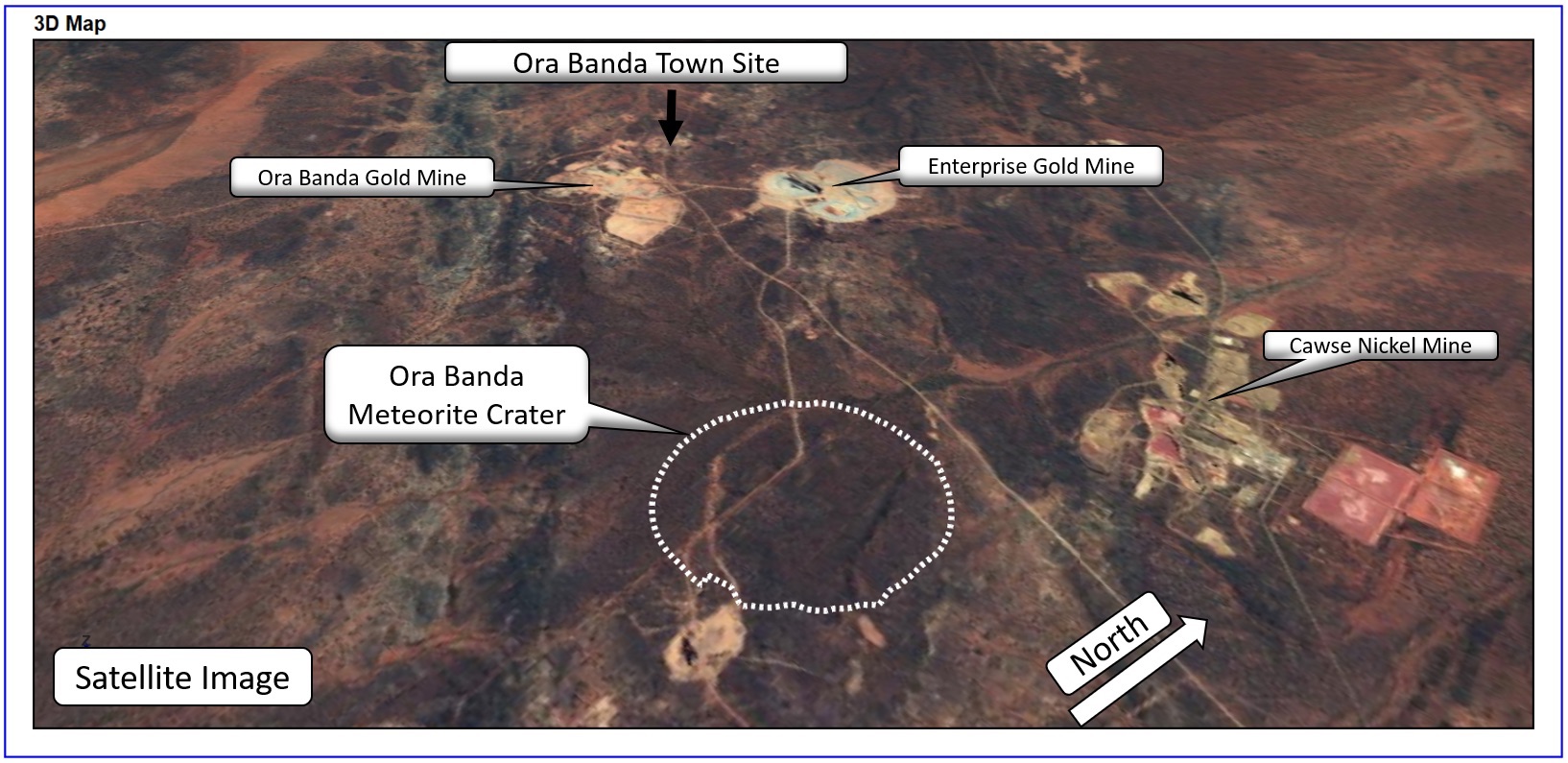Gold miners discover 100 million-year-old meteorite crater Down Under
The meteorite may have been longer than two football fields.

Gold miners in the Australian Outback recently discovered a gigantic meteorite crater dating to about 100 million years ago, back when dinosaurs roamed the Earth.
Found near the Western Australian town of Ora Banda, the newly dubbed Ora Banda Impact Crater is about 3 miles (5 kilometers) across. This huge hole was likely created by a meteorite up to 660 feet (200 meters) wide, or longer than the length of two American football fields, according to Resourc.ly, a Western Australia news outlet.
When geologists at Evolution Mining, an Australian gold mining company, came across some unusual rock cores at Ora Banda, they called Jayson Meyers, the principal geophysicist, director and founder of Resource Potentials, a geophysics consulting and contracting company in Perth. Meyers examined the geologists' drill core samples, as well as rock samples from the site, and he immediately noticed the shatter cones — telltale signs of a meteorite crash.
Related: Meteorites: Rocks that survived fiery plunge to Earth
Shatter cones form when high-pressure, high-velocity shock waves from a large impacting object — such as a meteorite or a gigantic explosion (such as would occur at a nuclear testing site) — rattle an area, according to the Planetary Science Institute (PSI), a nonprofit group based in Tucson, Arizona, which was not involved with the new find. These shock waves shatter rock into the unique shatter cone shape, just like a mark that a hard object can leave on a car's windshield.
Because "we know they didn't do any nuclear testing at Ora Banda," the evidence suggests that an ancient impact crater hit the site, Meyers told Resourc.ly.



To learn more, Meyers examined the site's topography (that is, its varying elevations) and examined a gravity anomaly map, which shows how the gravity field at a particular site differs from a uniform, featureless Earth, according to NASA's Earth Observatory, which wasn't involved in the finding. Any gravitational anomalies that turn up on the map can give insight into hidden features that affect the amount of mass, and therefore gravitational pull, in a given area. For instance, a mountain range would have more gravitational force than a featureless surface, while an ocean trench or crater would have negative gravity anomalies, the Earth Observatory explained.
Get the world’s most fascinating discoveries delivered straight to your inbox.
Meyer's work revealed a hidden impact crater with a pucker in the middle. This pucker is where shattered rocks came back to the surface after the meteorite struck, like a compressed spring that bounces back, Resourc.ly reported. When the geologists went to the "pucker" part of the site, they discovered shatter cones in the rocky outcrops.
Now, scientists from Curtin University in Perth are investigating the Ora Banda site on a microscopic level. In particular, the team will examine whether minerals at the site were vaporized and then re-crystallized under high pressures. "The energy released when the [meteorite] impacted would have been more than the combined energy from every atomic test ever conducted," Meyers told Resourc.ly.
Research on zircons and other minerals from the crater will likely reveal when the meteorite struck — right now, Meyers thinks it hit between 250 million and 40 million years ago. (If it struck after the Cretaceous period ended, about 65 million years ago, this meteorite wouldn't have bothered the non-avian dinosaurs, because they were already dead.)
The dinosaur-killing asteroid was much larger and more lethal. That asteroid, which hit the area that is now Mexico's Yucatan Peninsula, was about 6 miles (10 km) wide and left an impact crater about 90 miles (150 km) across.
Editor's note: The story mistakenly referred to the meteorite as a "comet" in one instance. This has been corrected.
Originally published on Live Science.

Laura is the managing editor at Live Science. She also runs the archaeology section and the Life's Little Mysteries series. Her work has appeared in The New York Times, Scholastic, Popular Science and Spectrum, a site on autism research. She has won multiple awards from the Society of Professional Journalists and the Washington Newspaper Publishers Association for her reporting at a weekly newspaper near Seattle. Laura holds a bachelor's degree in English literature and psychology from Washington University in St. Louis and a master's degree in science writing from NYU.
